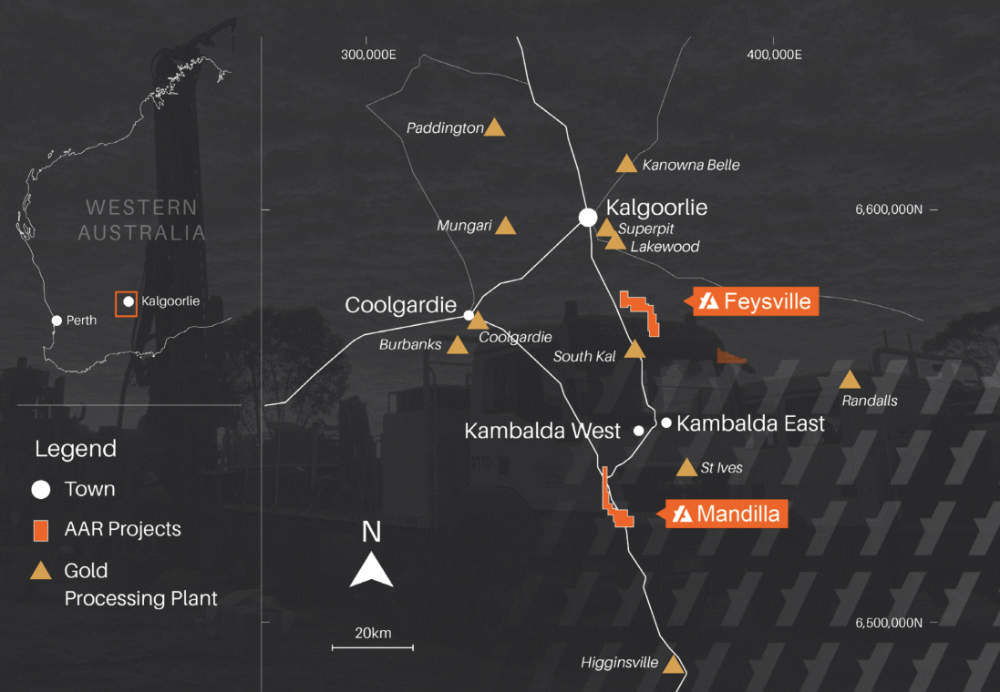Astral Resources enjoys divine 99.5pc gold recoveries from Mandilla testing

Metallurgical test results from the Hestia, Eos and Iris deposits are consistent with those from the flagship Theia deposit. Pic: Getty Images
- Metallurgical testing has de-risked Astral’s Mandilla project after achieving gold recoveries of up to 99.5%
- Results from Hestia, Eos and Iris consistent with the flagship Theia deposit
- Already high 95.7% gold recovery assumption used in the scoping study might be conservative
Special Report: Metallurgical test work has further de-risked Astral Resources’ Mandilla gold project in WA’s Eastern Goldfields region after finding that its mineralisation is amendable to very rapid leaching with recoveries of up to 99.5%.
The testing, which was completed using a range of grind sizes and with very modest cyanide concentrations reflecting typical process plant conditions on samples from the Hestia, Eos and Iris deposits, achieved extremely high gravity gold recoveries and very rapid leaching.
Using a relatively coarse grind size of 212μm, the final gold recoveries after eight hours of leaching were:
- 96.5% gravity recovery and 99.5% final recovery for Hestia
- 17.9% gravity recovery and 98.8% final recovery for Eos; and
- 66.8% gravity recovery and 96.5% final recovery for Iris.
This is consistent with results achieved at the flagship Theia deposit, which had top eight hour leaching results of 61.8% gravity and 97.1% final recoveries for oxide material and 93.2% gravity and 98.9% final recoveries for fresh rock using the same 212μm grind size.
Astral Resources (ASX:AAR) also noted that it had completed the first phase of 70 infill drill holes totalling ~6500m at the Theia deposit and has moved the rig to the Feysville gold project to undertake a 34-hole program totalling 3750m to test for extensions to the Kamperman deposit.

Exceptional results
“The exceptional metallurgical results for Hestia, Eos and Iris continue to highlight the outstanding metallurgical characteristics of the Mandilla gold project,” managing director Marc Ducler said.
“Typically, gold project studies in the Eastern Goldfields report initial metallurgical results based on 1000ppm cyanide concentrations and 75µm grind sizes.
“The confidence in the Mandilla gold project gained from prior studies allowed us to successfully test much lower cyanide levels at much coarser grind sizes that would deliver very low processing costs yet still achieve sector-leading gold recoveries.
“To date, we have conducted 20 gravity and leach tests at Mandilla, with the gold remaining in the assayed tail averaging 0.02g/t gold.
“This demonstrates that the 95.7% gold recovery assumption used in the scoping study, while considered high by industry standards, is potentially conservative when considering the excellent metallurgical properties being demonstrated at Mandilla.
Ducler said the results confirmed the ability to generate those recoveries in ‘easily achievable’ real world gold processing plant conditions.
“This will positively impact the metrics and economics of the Mandilla gold project pre-feasibility study which is expected to be completed in the June quarter 2025,” he said.
Ducler added that while the September 2023 scoping study did not include the 115,000oz Iris deposit, it is expected to be included in the PFS due to the strong metallurgical results and increase in gold price from just under US$2000/oz to the current US$2582/oz.
Mandilla project
Mandilla sits in the northern Widgiemooltha greenstone belt ~70km south of Kalgoorlie, an area which hosts world-class deposits such as the Super Pit in Kalgoorlie, Gold Fields’ St Ives mine south of Kambalda and Westgold Resources’ (ASX:WGX) Beta Hunt gold mine.
It is covered by existing mining leases which are not subject to any third‐party royalties and consists of the Theia, Iris, Eos and Hestia deposits with a global resource of 37Mt grading 1.1g/t gold for 1.27Moz of contained gold.
Gold mineralisation at Theia and Iris is comprised of structurally controlled quartz vein arrays and hydrothermal alteration close to the western margin of the Emu Rocks Granite.
Significant north-west to west-north-west trending structures along the western flank of the project are interpreted from aeromagnetic data to cut through the granitic intrusion and are considered important in localising gold mineralisation at Theia, which has a mineralised footprint extending over a strike length of more than 1.6km.
Meanwhile, the mineralised footprint at Iris extends over a strike of ~600m, combining with Theia to form a mineralised zone with more than 2.2km of strike.
At Eos, a relatively shallow high-grade mineralised palaeochannel deposit has been identified over a strike of ~600m. A primary gold source is also present with further drilling required to determine both the nature and structural controls on mineralisation and its extent.
Mineralisation has been delineated over 800m of strike at Hestia ~500m west of Theia. This is associated with a shear zone adjacent to a mafic/sediment contact, interpreted to be part of the major north-south trending group of thrust faults known as the Spargoville Shear Corridor.
The Spargoville Shear Corridor hosts the historically mined Wattle Dam gold mine.
Hestia mineralisation, which is present in a different geological setting to bedrock mineralisation at Theia and Iris, remains open both down-dip and along strike.
Upcoming activity
Assays are currently pending for the 70-hole infill drill program that was completed at the Theia deposit to upgrade the inferred resource within the Stage 1 and Stage 2 open pit designs envisioned in the scoping study to at least the higher confidence indicated category.
AAR has also completed seven of the 34 holes it is drilling at the Kamperman deposit within its Feysville project to both infill and extend mineralisation.
Significantly, the first three holes –a 200m step-out to the north and the two most northeastern step-outs – have all intersected significant quartz and sulphide mineralisation, characteristic of the lithologies which host mineralisation elsewhere at Kamperman.
Resource estimations are currently underway for the Think Big, Rogan Josh and Kamperman deposits at Feysville and are expected to be reported later this month.
More drilling is also on the cards with the RC rig to return to continue the 14,000m infill drill program at Theia upon completion of the Kamperman program.
This article was developed in collaboration with Astral Resources, a Stockhead advertiser at the time of publishing.
This article does not constitute financial product advice. You should consider obtaining independent advice before making any financial decisions.
Related Topics

UNLOCK INSIGHTS
Discover the untold stories of emerging ASX stocks.
Daily news and expert analysis, it's free to subscribe.
By proceeding, you confirm you understand that we handle personal information in accordance with our Privacy Policy.








